How to make a garage oven correctly?
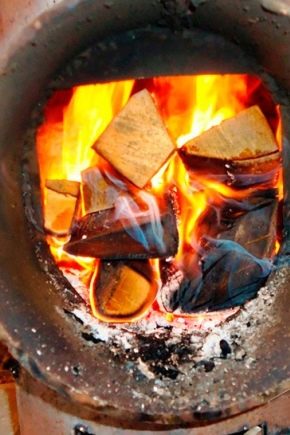
Sometimes buying some finished products can be financially difficult, so you may need to make them yourself. For example, making a furnace for a garage at first glance may seem like an impossible task, but if you follow all the rules, the idea can be easily implemented.
Let's take a closer look at the features and varieties of garage stoves, and also get acquainted with the intricacies of their own production.
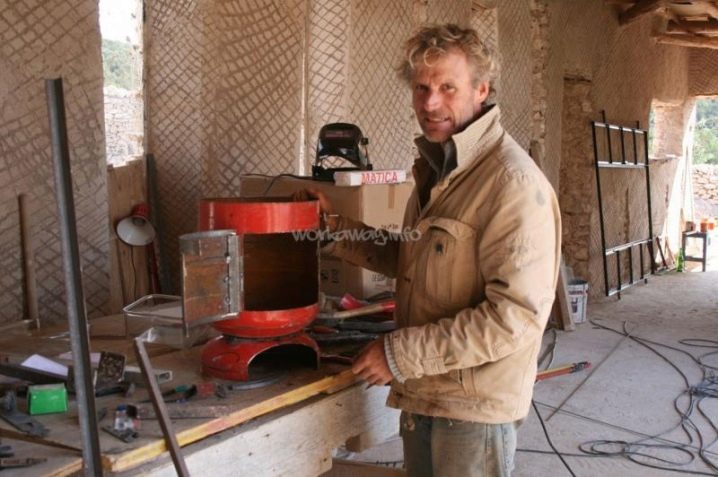
Peculiarities
Some car enthusiasts spend a lot of time in the garage fixing or upgrading their car. A garage stove is not an ordinary product, since it differs somewhat from a classic stove in both its appearance and functional characteristics. But besides this, the product has a lot of advantages, the main of which are efficiency and the financial side of the issue.
Garage heating is important not only from the point of view of heating the air, it is also necessary to maintain an appropriate atmosphere in the room.
The fact is that dampness is often observed in the garage, which can lead to the appearance of mold and mildew, and uniform heating eliminates such problems.
And the minimum costs for materials for manufacturing and fuel will allow you to save a lot and not inflict a tangible blow on the budget.
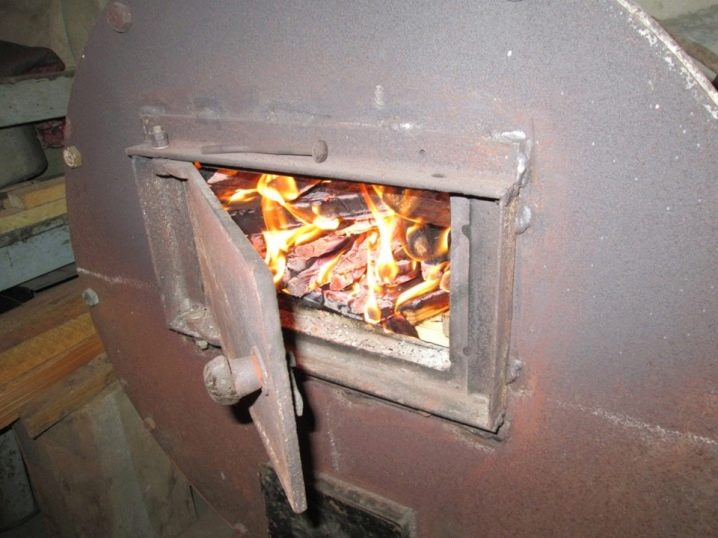
Primary requirements
Since garage ovens are mainly used to heat small rooms, it is necessary to take into account some of the requirements that a particular product must meet.
Depending on the size of the room, it is necessary to choose the best design option and decide which stove heating is best suited and which model will be the most relevant and effective - a brick product or an option from an empty cylinder.
It is important that the product has not only the highest efficiency, but also complies with all safety rules. In order to avoid the penetration of smoke into the room and a threat to life, it is necessary to make sure that the chimney is arranged in accordance with all the rules and is carefully sealed. Under no circumstances should corrosive smoke vapors enter the room.
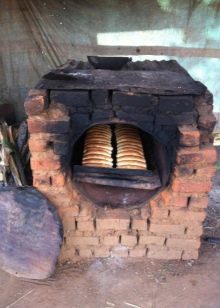
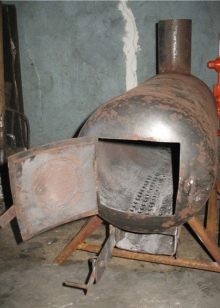
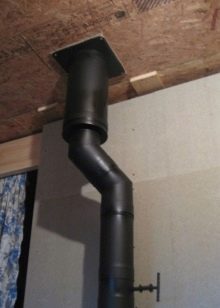
All flammable objects and flammable substances must be kept at a safe distance from the product, so you should take care of the location of the oven in advance. Raw materials of doubtful origin should not be used for kindling, as the emitted vapors and gases may be harmful to health.
When using metal models, the heating time should be divided into several periods. It is better to light the stove two or three times rather than resorting to a long burning period. This is due to the fact that the metal can become excessively hot and its contact with any combustible materials will cause a fire.
The chimney and the stove as a whole should be cleaned, although infrequently, but regularly - up to three times a year.
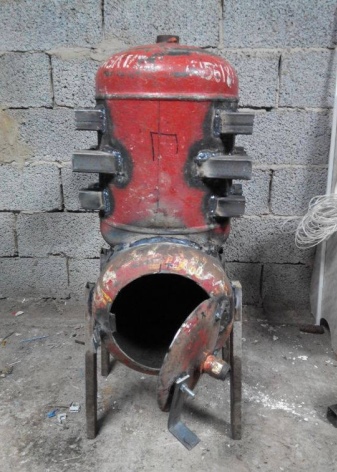
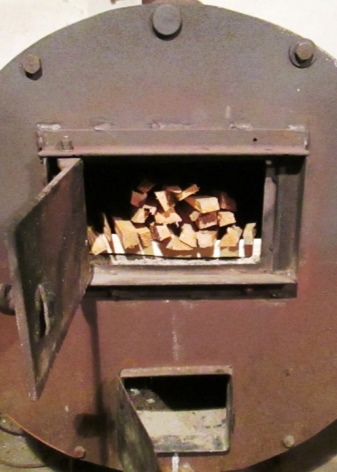
During the kindling and throughout the entire combustion procedure, the door must be kept closed in order to avoid the ingress of fire outside and its spread throughout the space of the room.
It is strictly forbidden to leave small children alone with a melted product.
In addition, smoldering particles should not be thrown away near buildings or in areas with abundant vegetation such as shrubs or dry grass. All garbage must be burned to the ground or extinguished beforehand.
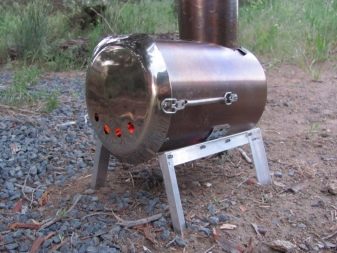
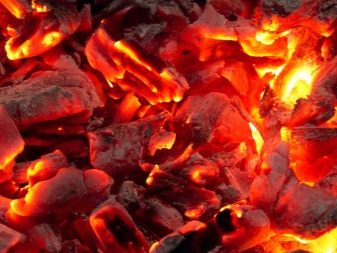
Types and materials for manufacturing
There is no need for the purchase of specialized parts or the manufacture of individual particles for the self-made construction of furnaces of such a plan. Sometimes even improvised materials are suitable for work, which can be bought at a very low cost or even received for free. But some requirements for metals and brick products used for the construction of the structure are absolutely justified.
For example, metal elements used in the production process must be resistant to high temperatures. The heat-resistant properties of the materials will not prevent the metal from glowing, but will not allow it to melt.
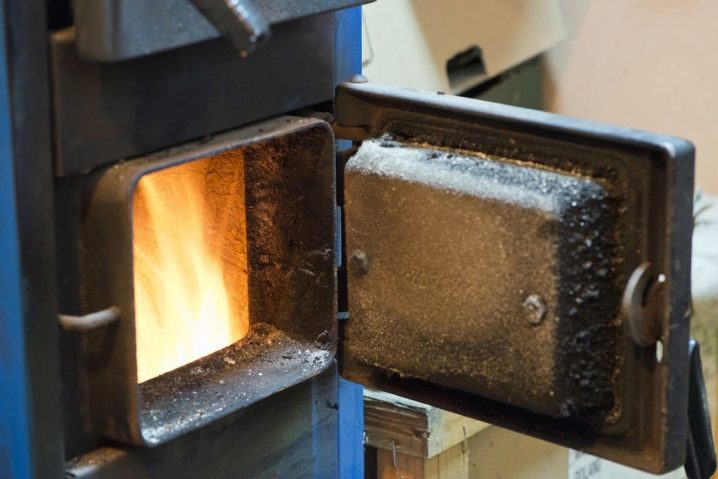
Let's get acquainted in more detail with all types of designs and the subtleties of manufacturing certain models.
Stove-potbelly stove
Perhaps the most common version of a garage stove is a potbelly stove. Such models were popular at the beginning of the 20th century and, being easy to use and very practical, were able to practically replace fireplaces. Potbelly stoves were popular in houses and apartments until the advent of central heating, and after that they began to be used only when necessary.
The frame of the entire stove, including both the main part and the chimney, is made of metal, which, on the one hand, is a plus, and on the other, a rather significant minus, since when you stop maintaining the firebox and add firewood, the stove cools down very quickly and indoors again getting cold.
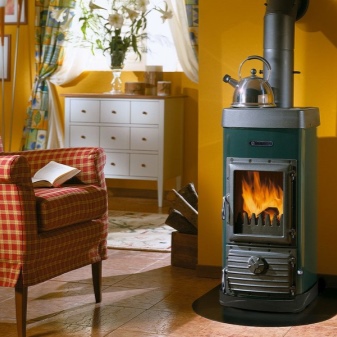

The potbelly stove is a very economical product, since no large costs are required for its manufacture. For manufacturing, you can use, for example, propane cylinders or large iron pipes with dense walls, which must have considerable strength.
Iron barrels are also fine, but special attention should be paid to their selection. The barrel should not be too large, since a stove with too large dimensions will be bulky and not entirely practical, but it should have rather thick walls - from 2 to 5 mm.
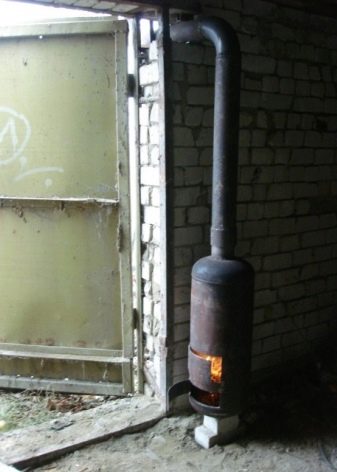
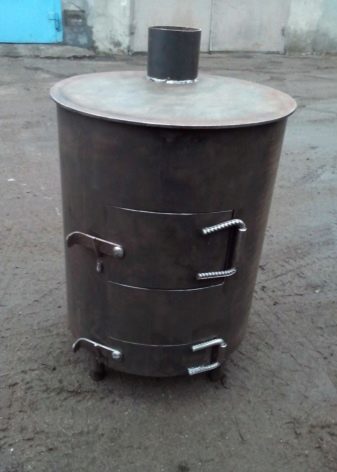
There are types of stoves with a water circuitwhich are slightly different from the classic models. Heating of this structure is carried out by increasing the temperature of the water, as well as evaporating a certain amount of it, so the walls stay hot longer and radiate heat for a much longer time, heating the room.
The main advantage of this model lies in the duration of heat propagation, since the distribution and maintenance of heat can even be enough to heat a small country house. As for a small garage space, for those who spend most of their time working with a car, this is an excellent option for a heating structure.
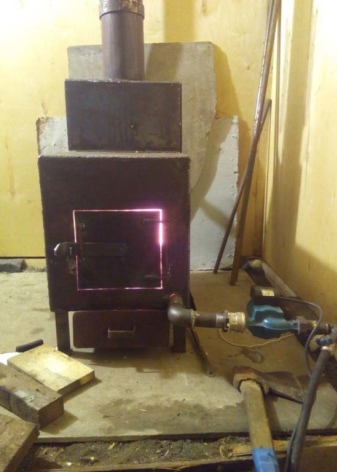

Brick structures
In addition to compact and easy-to-use stoves, there is also a variant of brick structures, which has a number of both advantages and disadvantages.
This model retains heat much longer because it takes a longer time to cool down. This heat capacity is provided both due to the thermoregulatory properties of the brick, and due to the rather large weight of the structure as a whole.
For a brick model, it is necessary to have a damper, which is also called a blower, thanks to which you can regulate the temperature in the room. The main thing is to learn how to use such functions of this model, since improper use of the damper can even harm your health.
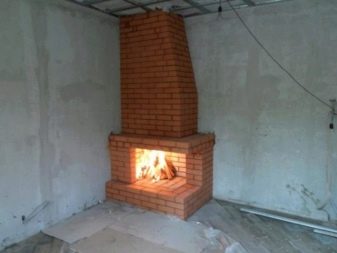
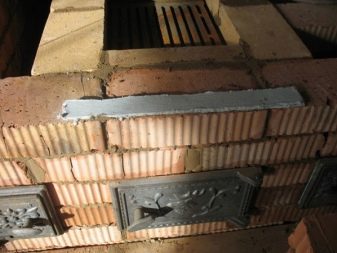
When you make a brick oven yourself, you can save a lot, since the material is quite inexpensive, and the process is not so laborious as to interfere with outside labor.The main thing is to calculate the required amount of bricks and cement, as well as to purchase the necessary cast iron parts.
The heating power directly depends on the size of the furnace, therefore, depending on the functional characteristics of the room itself, you can make a suitable size of the heating structure with the appropriate power.
In addition, the operation of such a product is also very economical, since no special means are required for kindling. Both coal and the most common firewood will do.
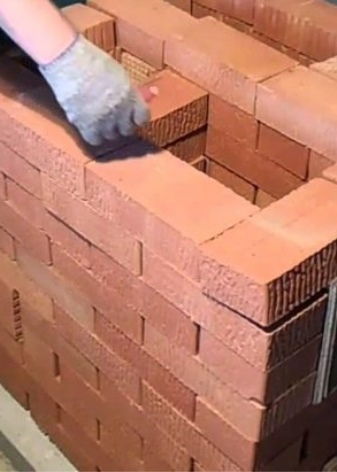
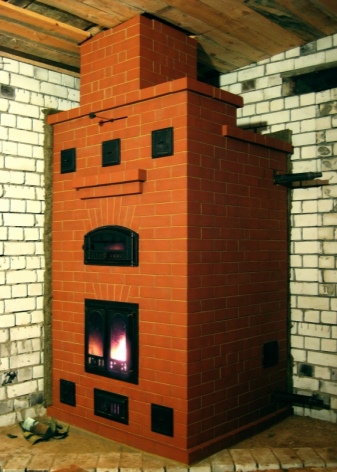
But, unfortunately, this product also has some drawbacks that can slightly overshadow the process of using the oven.
Such a structure cools down for a long time, but it also heats up for quite a long time., therefore, with the rapid warming up of the room, some problems may arise. In addition, in order to maintain a certain temperature in the room, it is necessary to heat the stove daily.
If you want to make the heating structure durable and reliable, most likely you will have to purchase a special brick with refractory properties, which has a cost many times higher than the usual one. Therefore, the issue of economy can be considered very controversial.
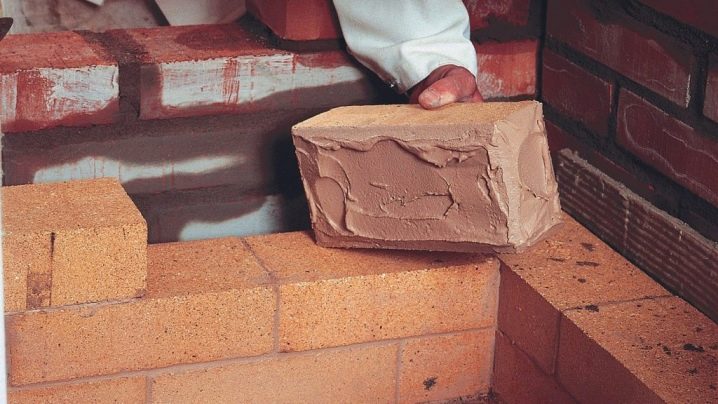
How to do it yourself?
For those who are not related to plumbing and construction, making a stove with your own hands may seem like a difficult and time-consuming process. But the designs are sometimes so simple that the heating unit can sometimes be built even from improvised means.
But you should not do everything at random, for the manufacture of a homemade structure, you must first draw up all the necessary drawings and provide for all the advantages and disadvantages. Let's take a closer look at which products have the highest efficiency and what you need to know to make them.


Vertical
The most common option for making a furnace from a cylinder, barrel or pipe is the vertical model, since the design is very compact and does not take up much space in the horizontal space.
First you need to choose a cylindrical part that is suitable in size and parameters. Then it is necessary to divide the main part into two, different from each other in size. The lower, narrower element will be for ash, and the upper space for kindling with firewood.
Next, in the resulting parts, you need to make square holes. The lower one can be small, but the upper one should be quite wide, allowing you to easily place firewood in the inner space of the stove.
The cut parts cannot be thrown away, since they will be useful for making doors - you just need to attach hinges to them.
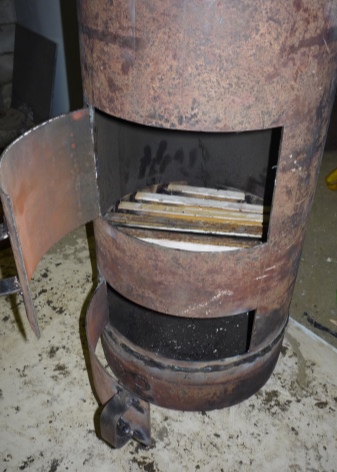
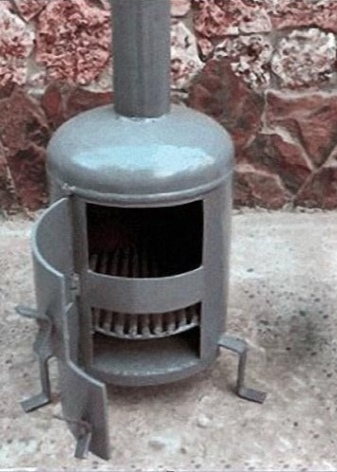
Inside, in the place where the stove is divided into two parts, it is necessary to weld a strong grate. You can purchase a finished part and fit it to size, or you can make it yourself. To do this, you will need steel rods of reinforcement, the thickness of which is from 12 to 16 mm. The rods must be cut into parts of certain sizes and welded to the base at a distance of two centimeters from each other.
If the bottom is missing, it will need to be welded, and in the upper part, cut a hole that will serve as a chimney. A pipe is attached to the hole, then its individual parts are assembled and as a result, a full-fledged chimney is obtained, capable of removing smoke from the room.
This completes the self-made construction of the vertical stove and the product is ready for use.
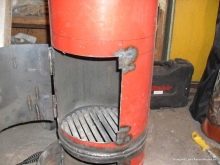
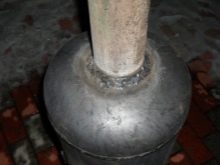
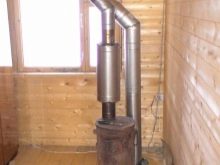
Horizontal
Another option for the location of a homemade iron potbelly stove is a horizontal position. As already mentioned, the disadvantage of this design is its cumbersomeness, because it takes up a fairly large space on the floor, so the horizontal version is categorically not suitable for small garage spaces.
So how do you make such a furnace model? It's pretty simple.For manufacturing, both a large balloon and a large rocket tube are suitable.
With a horizontal arrangement, there is no need to divide the main part into two parts, since the ash box is made separately and welded to one of the rounded sides. The box should have a rectangular shape and flat bottom edges, which will also serve as a support.

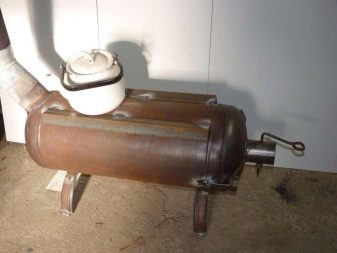
To prevent ash from remaining in the case, but falling into the box, it is necessary to drill several holes along the entire perimeter of the wall that is directly above it. The holes should not be too large to prevent burning particles from entering, but not too small.
The next stage in the manufacture of the stove is the construction of the chimney. To do this, it is necessary to select a pipe of not too large diameter and cut a corresponding hole under it in the upper part of the body, to which the part will be welded.
It is worth paying special attention to the place of welding, since the seam must be smooth, neat and without small holes - in no case should smoke enter the room.
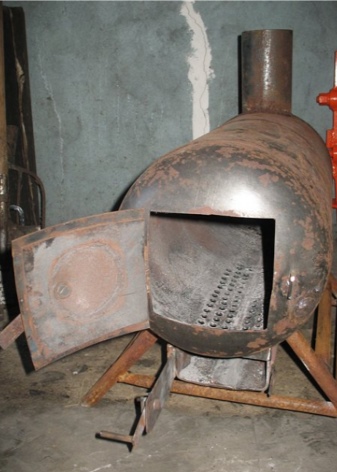
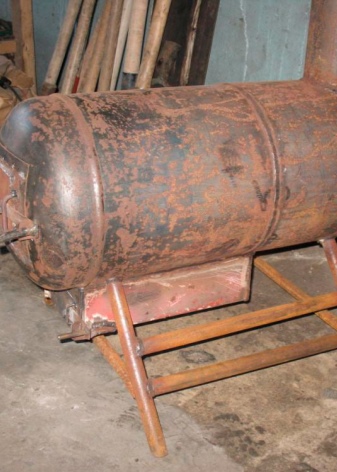
If necessary, you can make the legs separately. They will help the structure stand firmly and evenly in place.
Next, a door is made - a hole is cut out, hinges are welded to the iron part and all this is attached to the body. It is not scary if gaps remain when closing - they will allow air to pass through, which will contribute to better combustion.
After the door is built, it is necessary to clean the body of debris and you can start kindling.
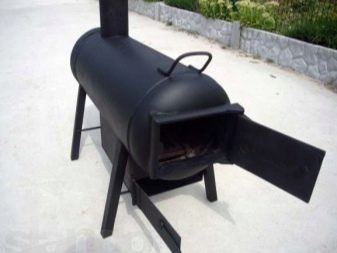

From two barrels
Sometimes the use of a classic potbelly stove or single-layer metal structures becomes impossible, since the walls get very hot and give too much heat radiation, overheating the room. It was to solve this problem that the design of two barrels was invented.
First you need to pick up barrels of different sizes and place one inside the other. It is important that there is a sufficient distance between their walls in order to evenly cover it with pebbles, sand or clay (in some cases, special mixtures are made).
Before pouring the mixture, it must be ignited over a fire and then cooled.


The outer barrel is exclusively a body, while the inner one is used for kindling. The barrels should also have all the necessary openings, an ash box and a chimney. To build a door, you will need to close the gap between the two parts using welding and metal in order to prevent the sand and pebble filler from spilling out.
Although this design heats up a little longer and does not immediately begin to generate heat, heating the room, but it allows you to maintain a more comfortable atmosphere in the garage and cools down longer after the firebox is completed.

Long burning
From an empty gas cylinder, you can build a structure that will serve as a long-burning heater. The idea, although not new, has become entrenched among the masses relatively recently, when instructions for making the most reliable and safe design appeared on one of the forums.
A long burning stove has one feature, which is also a disadvantage of the product. - it does not have a separate ash drawer, so in order to clean the interior, you will have to turn the case over and shake everything out by hand.
The advantage of the product is that the furnace is very easy to manufacture and, armed with a welding machine, it can be made within a few hours.
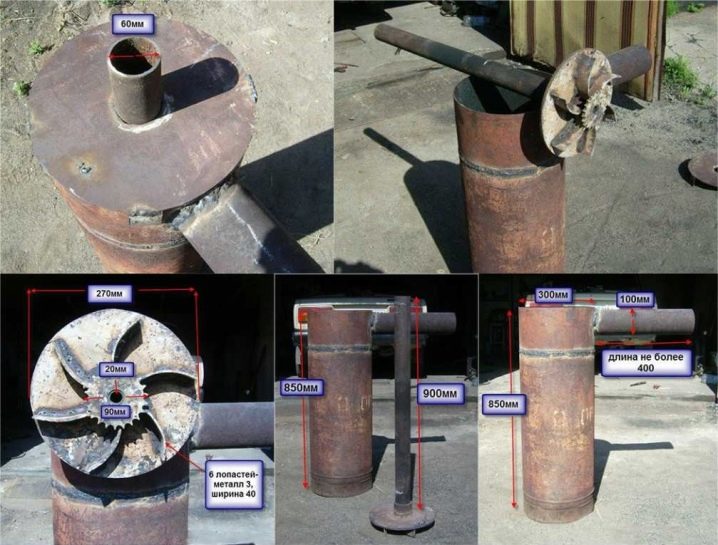
The structure is built in such a way that the combustion process starts from the top and gradually spreads downward. This is the reason for the long burning - the flame spreads gradually and rather slowly. But at the same time, the heating of the furnace and the space around it also slows down slightly.
This model must be cylindrical and can have an exclusively vertical arrangement. Therefore, both cylinders and wide iron pipes and standard metal barrels are suitable for its manufacture.
The structure has a movable part inside the cylinder, which is a small pipe and a metal circle that serves as a weight. These parts must be welded together.
Due to this structure, air enters the inside of the product, providing more intense combustion.
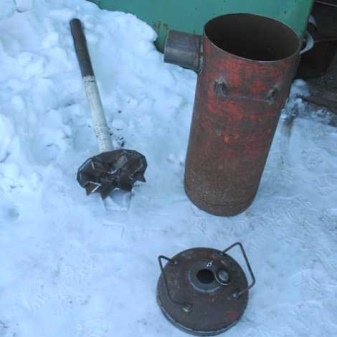
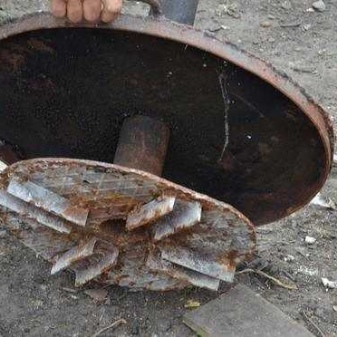
This model of a garage stove has a removable cover and a chimney at the top of the side. The dimensions of the chimney are determined individually, based on the parameters of the room, but on average it is about 2-3 meters. It is important that smoke does not enter the garage as it can be unsafe for health and life.
The bulk of firewood and sawdust is laid in the lower part of the product - on the bottom, a certain amount of combustible material is added to the load. In the process of burning, it sinks lower and lower and gradually the main bookmark begins to burn. As soon as all the wood burns out, the stove will start to cool down rather quickly and a new portion of fuel will be needed.

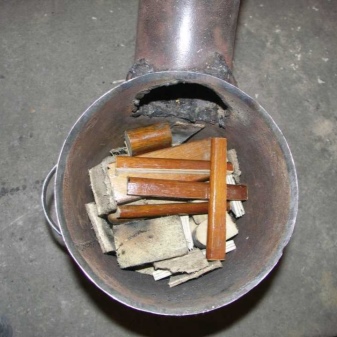
It is important to know that before starting the manufacture of the furnace, the body must be thoroughly rinsed from the inside., especially if it is an empty gas cylinder. After that, the upper part of the cylinder must be cut off - this part will serve as a lid. If a barrel or pipe is used for manufacturing, the lid must be made separately according to individual parameters.
In the upper part of the lid, you need to make a hole for the pipe, and on the side - an outlet for the chimney. Next, the inner tube is welded to the circle and installed inward, all parts are attached to each other and securely fixed.
And for ease of use, small handles can be attached to the lid and even the case itself.
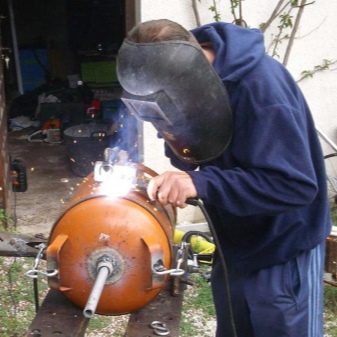
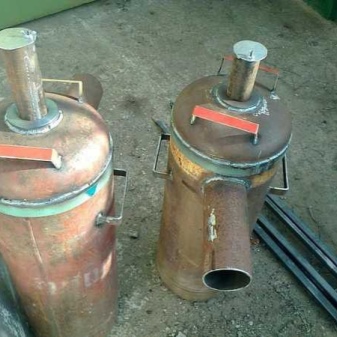
For the convenience of the design, some improvements are introduced into the manufacturing process. For example, in the lower part of such a stove, you can still build a special space for ash with a small door, from which you can easily remove all the contents.
But so that a large amount of oxygen does not enter through the lower door and the combustion process does not accelerate, you need to make it airtight. Thus, air will not be able to penetrate into the interior space due to the tightly closed opening.
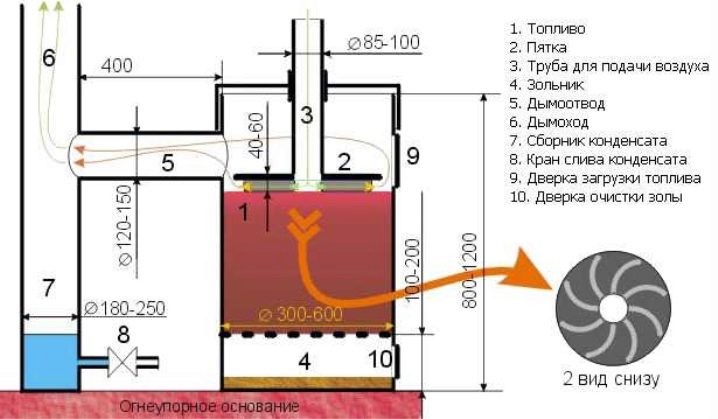
Another improvement is the installation of a number of specially shaped ribs on the metal circle. Thanks to this innovation, the air will spread evenly through the stove, which will have a beneficial effect on the entire heating process.

Brick
The construction of a brick structure is perhaps the most laborious and time-consuming process, since there is no ready-made frame, but only consumables.
To make a small but functional model, we need:
- ceramic bricks - about 300 pieces;
- a special door for the firebox with dimensions of 250x180 mm;
- ash grate - 240x250 mm;
- blower door - 130x130 mm;
- gate valve - 130x130 mm;
- cast iron panel, which will serve as a hob - 720x290 mm.
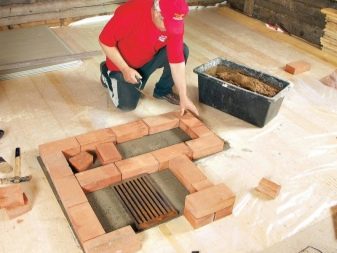
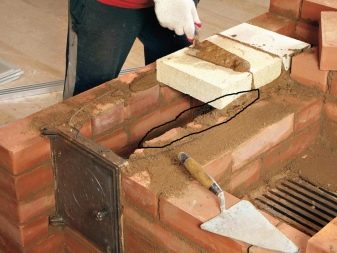
In order for the structure to be of high quality and strong, it is necessary to lay the elements on a clay mortar, observing the thickness of the seams up to one and a half centimeters. You should be aware that for the construction of this furnace, it is necessary to build a special foundation, which will not only increase the service life of the product, but also help to comply with all fire-prevention measures.
Bricks are laid in a special way - the bottom nine rows have practically no similarity to each other, the bricks are arranged according to a special scheme to ensure maximum strength and efficiency of the product.
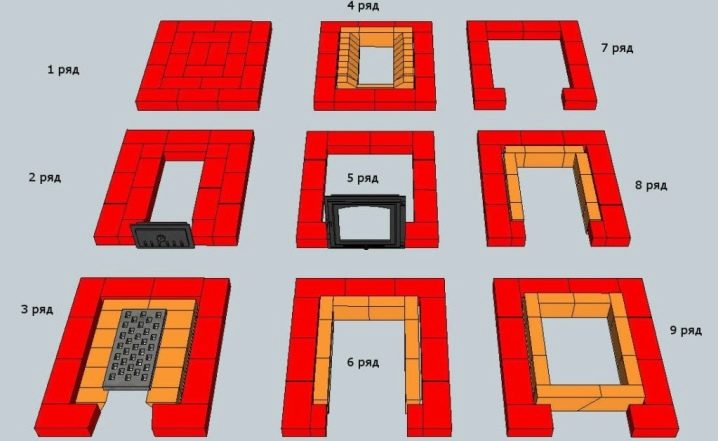
When laying, it will be necessary to make holes where cast iron elements will be laid.
The place for casting should be slightly larger in size, since the bricks tend to expand when heated, and cracks may appear due to too close masonry, thereby the structure will begin to dry out and fall apart rather quickly.
In addition, you should be aware that special material may be needed to maintain thermal insulation properties.serving as a heat exchanger. Particles of asbestos cord or heat-resistant mineral wool fiber are perfect. And to regulate heat transfer, you can use a valve, which will also help control the temperature in the room depending on the season.
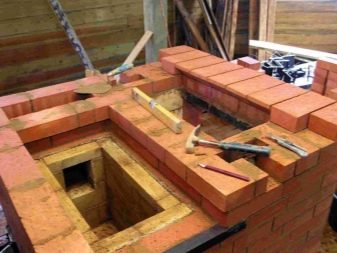

Fuel types
To light any stove, you will need the right fuel, and a homemade garage copy is no exception.
It is much easier to stock up on diesel fuel - diesel fuel than buying wood raw materials for a garage, but it has a lot of disadvantages and is considered the most fire hazardous. Burning in a furnace when using this fuel occurs due to the heating of the liquid and the combustion of the emitted vapors.
Waste oil design is equally hazardous and prone to unwanted fires. The thing is that the flame breaks out with lightning speed and sparks can accidentally hit flammable substances and objects in the vicinity.
In addition, models of stoves operating on liquid fuel have another drawback - an unpleasant oily odor that spreads during the combustion process. Otherwise, they are quite functional and economical.

Perhaps the most familiar and safe option is a wood-fired heating product. However, some users believe that the raw material burns up too slowly, which also affects the spread of heat. This problem can be solved quite simply - you can equip the structure with a mini-fan. If you put this element in the manufacturing process, it will contribute to the best air circulation, which will have a beneficial effect on the combustion and kindling process.
It is also worth noting that in some cases a combined fuel option is used for a long-burning furnace.
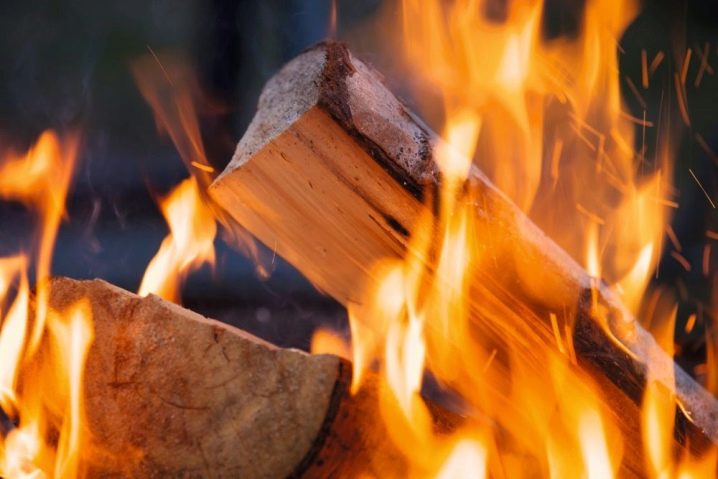
Advice
It is not enough just to make a high-quality product and determine its location, you must also install it correctly and securely fix it. Although some models have the advantage of being able to move and move the oven, a fixed position is important for safe use.
First of all, it should be noted that the installation of the product should be carried out exclusively on a flat surface. Even a minimal slope is unacceptable, since this can lead to uneven distribution of fuel inside the furnace and its inadvertent hit on the floor during combustion.
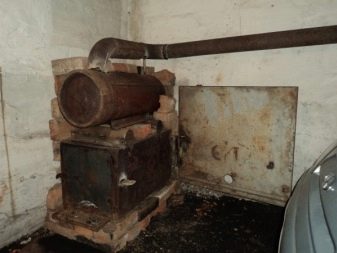
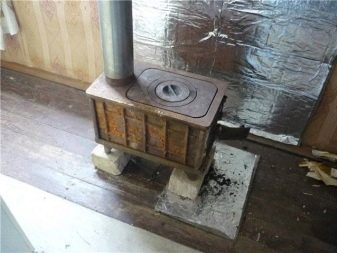
In addition, the stove should not be installed simply on the floor. It is best to use an asbestos-cement slab or brick surface for this. This nuance is not only a fire safety precaution, but also allows you to protect one or another floor covering from damage.
Professionals also advise using metal sheets to enclose the product on all sides where there are small holes, slots or lattice elements. If sparks or burning particles hit the outside, the sheets will not allow them to fall on household items, which will prevent the spread of fire.
For more information on how to properly lay a brick oven, see the next video.





























































The comment was sent successfully.